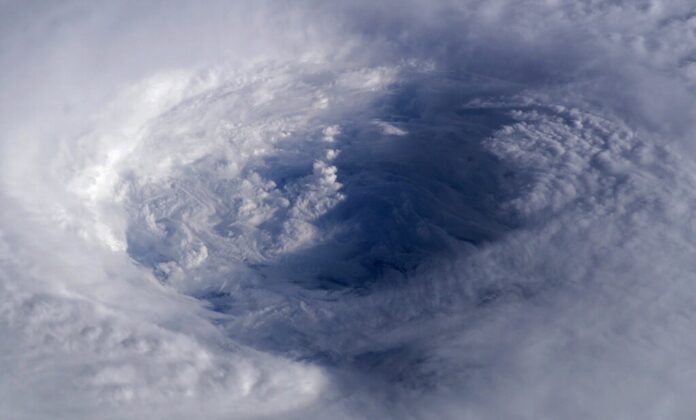[dd-parallax img=”https://jesuitroundup.org/wp-content/uploads/2023/03/Hurricane_Isabel_eye_from_ISS_edit_1-1.jpg” height=”1100″ speed=”2″ z-index=”2″ position=”center” offset=”true” text-pos=”bottom”]Photo of the eye of Hurricane Isabel (2003). credit: NASA astronaut Ed Lu [/dd-parallax]
“Heaven is under our feet as well as over our heads.”
— Henry David Thoreau
Nature is truly an awe-inspiring thing of beauty. In our busy lives, we tend to need to remember just how mighty the hand of nature can truly be. But if they are one force of nature that can still bend humanity, it must be a hurricane. They span miles upon miles and destroy even and everything in their path. They are, in many ways, the perfect repetition of destruction, a soulless force that is as beautiful and mighty as it is devastating and dangerous. In many ways, this photo represents this beautiful contrast, of power and beauty, from a place that is over our heads.
Context
The hurricane in question is the 2003 Hurricane Isabel, which would rip through the Lesser Antilles, Greater Antilles, and Lucayan Archipelago, both hitting the coast of North Carolina and Virginia. Isabel would go to the deadliest, costliest, and most intense hurricane in the 2003 Atlantic hurricane season. The category five hurricane would lead to 51 casualties and around 3.1 billion dollars worth of damages. The storm would affect ten states, whether by deaths or injuries, ranging from Florida to New York. It would record wind speeds up to 165 mph (270 km/h) and, at the time, would be the strongest Atlantic since Mitch in 1998.
The photo was taken on the International Space Station and is their view from there. The photographer NASA astronaut Ed Lu took this image of the eye of Hurricane Isabel. This photo was taken at approximately 11:18 UTC on September 13, 2003. Isabel had weakened to a Category 4 on the Saffir-Simpson Hurricane Scale by this time. The storm was located about 450 miles northeast of Puerto Rico. The camera used was a Kodak DCS760C electronic still camera with a focal length of 180 mm.
Here is the location of the photo ==> Location: 22° 30′ 0″ N, 62° 6′ 0″ W
Why I Love It
On the surface level, the photo is beautiful. It gives you a sense of awe just looking at the columns of wind going down and down into what seems like a never-ending spiral. But the wonder soon turns conflicted when you understand the lives that all those columns of wind took from us. All the damage it caused us and the lives it would ruin across the U.S. Your view of the photo can soon turn from awe and wonder to trepidation. But that is not how we should look at the photo. It should be a reflection of nature’s power, a power that can take our lives and the lives of others.
What helps emphasize this contrast theme is that as you get closer to the storm eye, the light fades away, and it becomes darker. The clouds also help give you a sense of liveliness with it the storm, giving it an almost weirdly humanistic trait to it. There is just something that is just so entrancing about this photo. It could be all the little details and patterns that each cloud has in the hurricane or the long spiral going down and down into the world we call home.
This is hands down one of my favorite images involving nature and the power it has. The photo has a majestic beauty, and it is eerily calming to look at the photo. Just get lost in the elaborate details of the clouds and become so tangled in the photo that you can’t look away. It is powerful yet beautiful. It is calming yet chaotic, it is dark, yet it is light. It is almost poetic how beautiful this photo is. A photo that is so beautiful could have only been taken from the heavens above.
Stay tuned to this series each week on The Roundup.






